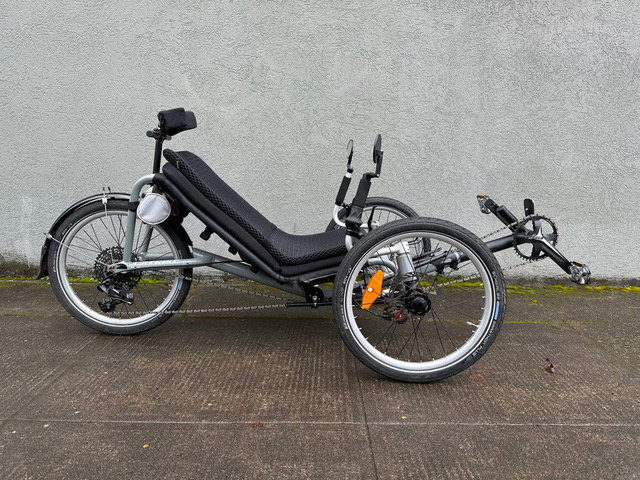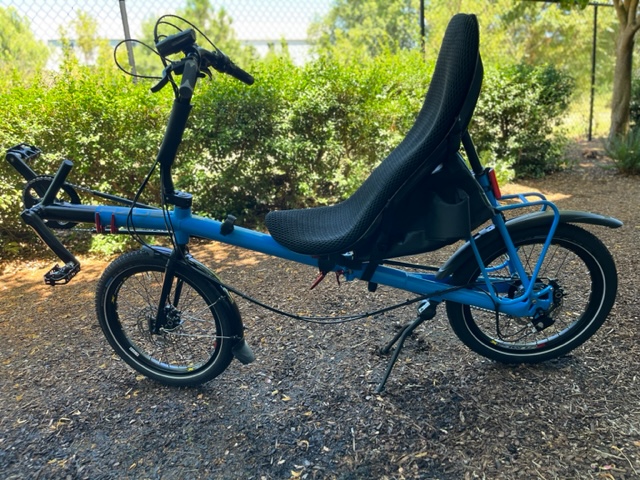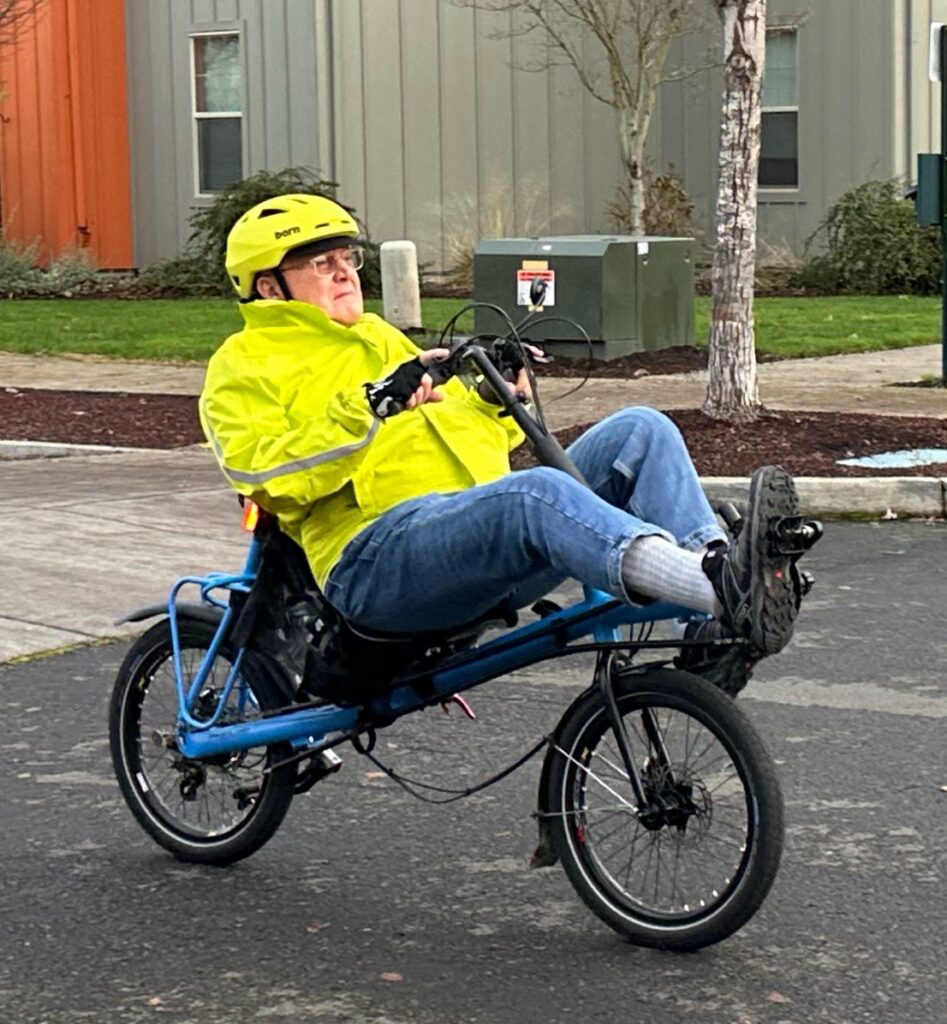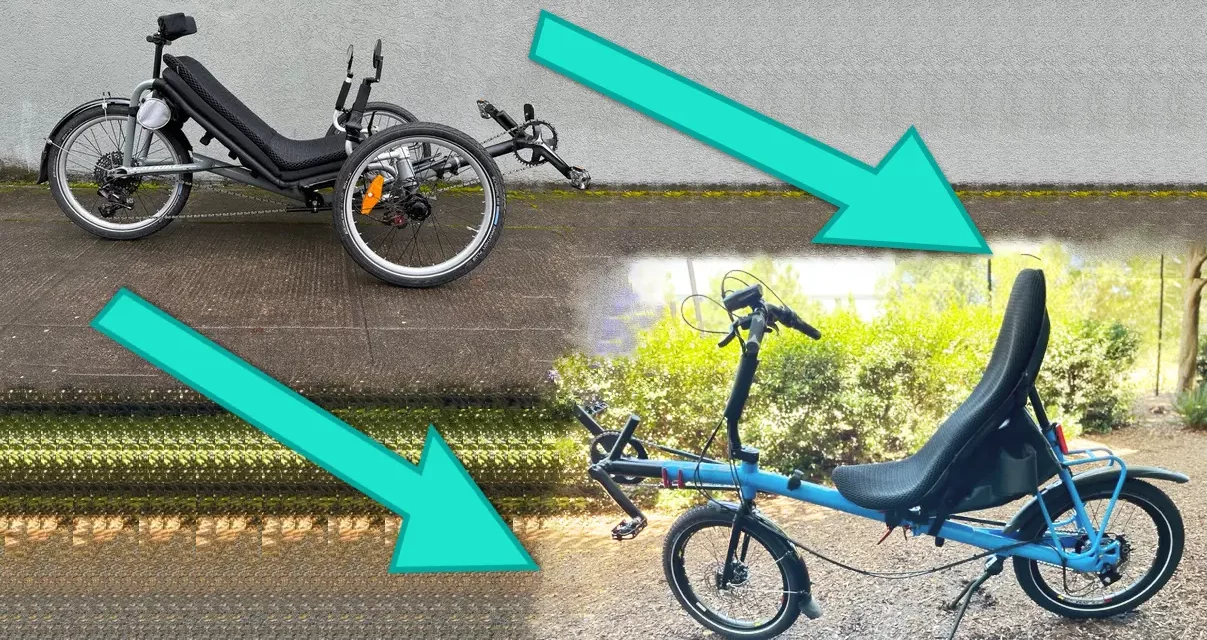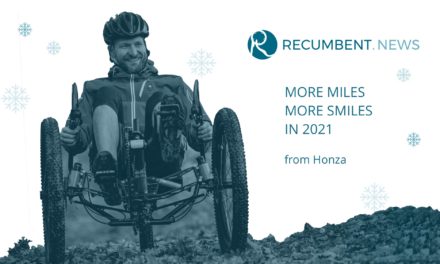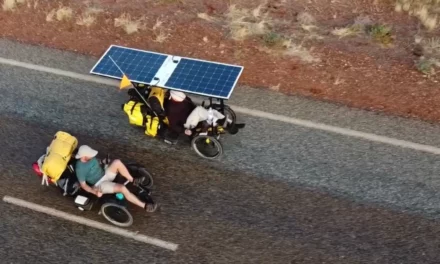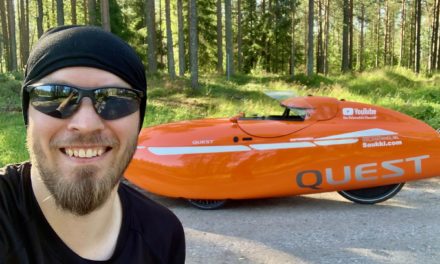It was not so long ago when recumbents were mainly single-track machines, and here and there, you could see a trike. But then came Greenspeed, Trice, and later HP Velotechnik with their Scorpion, and everything changed. Today, trikes are much more popular than recumbent bikes, which, unfortunately, are slowly disappearing from the recumbent world. Companies that failed to include at least one trike in their portfolio have gone out of business one by one, and today, only the best ones, mostly oriented towards performance cyclists, are left.
Why is that? Because trikes offer the same comfort as two-wheelers, but you don’t have to learn to ride them. They are perfectly stable at low speeds, and riding them is very relaxing. But recumbent tricycles also have their limitations, which come from their wider width, greater weight, and lower height, which means that there are many places in the world that you can’t get to with a trike or it’s quite difficult to get to with one. Similarly, there are situations that are much harder to deal with trikes than with a classic single-track recumbent, such as transport by some types of trains or in a bus. Some other comparisons can be found in my article Two-wheeler or a trike?
Tricycles have thus become the perfect bike for seniors, which is hardly surprising. Lots of cyclists who ride two-wheelers will eventually switch to a trike, but every now and then the opposite change occurs as well. My opinion is that people under, say, 55 should seriously consider two-wheelers when buying a recumbent bike. Richard Burr is 20 years older, but he still ended up swapping his Catrike Eola trike for an AZUB Origami folding recumbent. And because I was interested in his reasons, I asked him a few questions.
Was the Catrike Eola your first recumbent?
The Eola was my first recumbent. I bought it from Recumbent PDX in Portland, Oregon in Spring 2021, adding a headrest and Ventisit seat cushion. It weighs 35 pounds, doesn’t fold, and has a 1 x 11 transmission. Flatland cruising speed is 11 – 12 miles per hour
Why did you buy it, and did it fulfill your expectations?
I rode a Day 6 from 2016 to 2021. The Day 6 is a crank forward two wheeler with a backrest and an upright riding position. Although comfortable, it was fast with the wind at my back, slow into the wind and unstable in crosswinds. A recumbent trike solved those problems and the Eola was the simplest, least expensive solution.
How often did you ride it, and where?
I rode it 9 miles daily, for exercise, in good weather from April through October on Eugene’s Fern Ridge mixed use path.The path is flat, paved, begins in the city and runs west out or town through our wetlands. I rode about ½ mile through a light industrial area to connect with the path. I was nervous riding low alongside the trucks.
Why did you decide to purchase a two-wheeler now?
In September 2021, I rode the 15 mile Route of the Hiawatha rail to trail in the Idaho panhandle. 10 tunnels and 7 high trestles later, I was hooked. This was a lot more fun than speeding through the country on interstate highways, stopping occasionally at scenic lookouts. I decided right then that future travels would include rail to trails adventures. The only unpleasant part was the mountain bike I rented. It was the end of the season and the bike was in rough shape. I decided to buy a folding recumbent I could carry without lowering the back seat in my Hyundai Tucson. Jonathan at Rose City Recumbents convinced me that the AZUB Origami was my best choice.
Will it be the only bike you will use, or will you use a trike as well?
The EOLA is for sale on consignment at Rose City Recumbents. The Origami does everything I need.
How difficult was for you to learn to ride it in your age?
About the same as other older recumbent riders I meet. I spent the first few days sitting up and scooting around on flat pavement. I spent another few days pushing off, reclining and coasting down a gentle grade. After that, I spent half an hour a day for a week riding in a straight line for short distances on level ground. I followed that with a couple of days of practicing sweeping turns. Then, it was on to 5 mile rides on the I learned not to ride too slowly or turn too sharply. I now ride 9 miles most days on the bike path with no problems and am looking forward to riding some of our Western rail-trails next year.
Are you afraid of falling off the bike, or do you find it stable enough?
Not anymore. My brain is now used to balancing the bike and I haven’t fallen off in the last several hundred miles. The Origami now seems quite stable to me and is a pleasure to ride. I think for most people my age, however, I would recommend one of the Azub trikes.
What do you like most about riding a recumbent?
The best part about riding a recumbent at 75 years old is that nothing hurts at the end of the day. I can ride farther and can see more of the world around me from the recumbent position. And when it’s time to fold up and hit the road, the Origami is light enough for me to lift it into the car without help. I’m looking forward to the next 75 years on the trail on my Origami!
